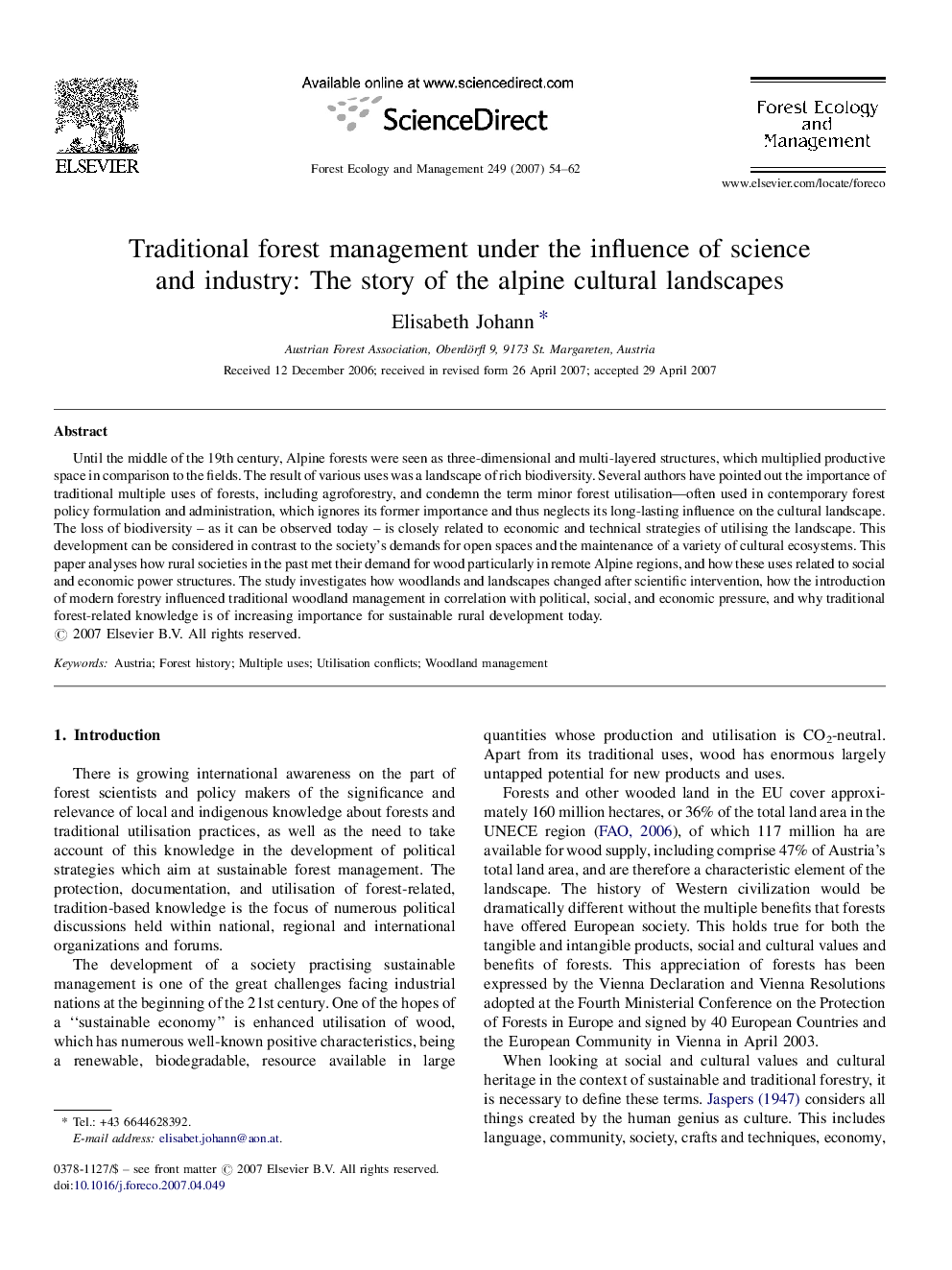| Article ID | Journal | Published Year | Pages | File Type |
|---|---|---|---|---|
| 90165 | Forest Ecology and Management | 2007 | 9 Pages |
Until the middle of the 19th century, Alpine forests were seen as three-dimensional and multi-layered structures, which multiplied productive space in comparison to the fields. The result of various uses was a landscape of rich biodiversity. Several authors have pointed out the importance of traditional multiple uses of forests, including agroforestry, and condemn the term minor forest utilisation—often used in contemporary forest policy formulation and administration, which ignores its former importance and thus neglects its long-lasting influence on the cultural landscape. The loss of biodiversity – as it can be observed today – is closely related to economic and technical strategies of utilising the landscape. This development can be considered in contrast to the society's demands for open spaces and the maintenance of a variety of cultural ecosystems. This paper analyses how rural societies in the past met their demand for wood particularly in remote Alpine regions, and how these uses related to social and economic power structures. The study investigates how woodlands and landscapes changed after scientific intervention, how the introduction of modern forestry influenced traditional woodland management in correlation with political, social, and economic pressure, and why traditional forest-related knowledge is of increasing importance for sustainable rural development today.
